Dimorphodon macronyx
The first fossil of Dimorphodon was discovered in 1828 by Mary Anning (1799–1847).
It was the first UK pterosaur to be scientifically described, and only the third in the whole world.
It had a large head and pointed teeth which were longer at the front of the jaws, hence its name - Dimorphodon, meaning ‘two-form tooth’.
The species name macronyx refers to the large claws on the forelimbs. The long stiff tail may have been involved in flight stability. The wingspan was approximately 1.4 metres.
The Natural History Museum collection includes three skeletons. The headless one found by Mary Anning in 1828 was described by William Buckland, a geologist at Oxford University, as Pterodactylus macronyx in 1829.
Later finds showed that the skull was very different to Pterodactylus, so Richard Owen, who later became the director of the Museum, changed the name to Dimorphodon in 1858.
Other specimens at the Museum include isolated lower jaws, a half-metre long tail and other parts of the skeleton.
Very few specimens exist outside the Natural History Museum.
Species detail
-

Distribution
The pterosaurs probably lived inland, but ventured out over the sea to catch fish. Find out more.
-

Biology
Other pterosaur fossils have helped scientists build a picture of Dimorphodon’s life history. Find out what we know.
-

Behaviour
Fossil footprints tell us that pterosaurs walked on all fours. What else do we know about their behaviour?
-

References
More sources of information on Dimorphodon macronyx.
Images
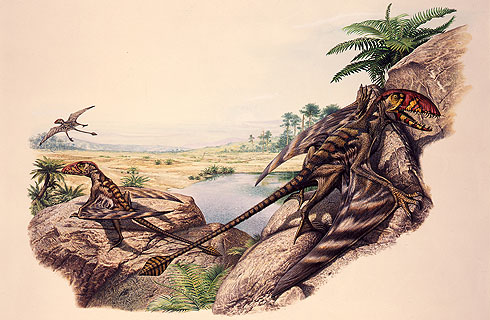
An artist's restoration of Dimorphodon
© John Sibbick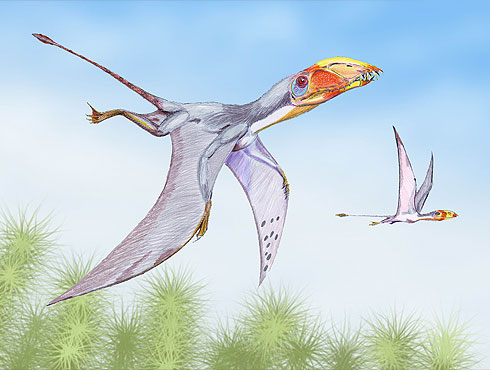
Artist's impression of Dimorphodon in flight
© Dmitry Bogdanov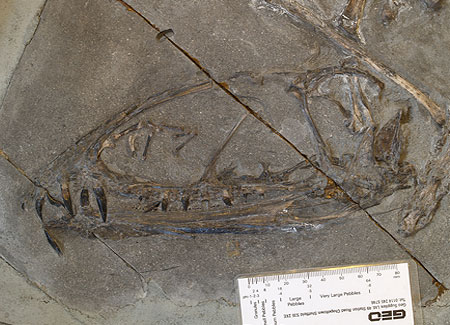
A well-preserved skull of Dimorphodon
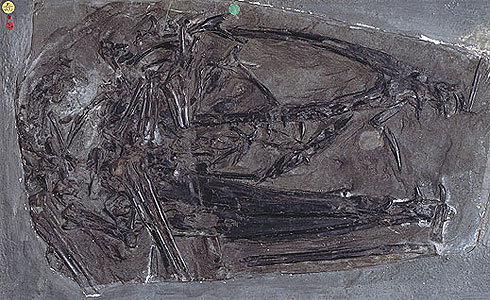
The fossil skull and lower jaw belonging to Dimorphodon macronyx.
© Natural History Museum
Restoration of Dimorphodon walking as a quadraped, from Dragons of the Air 1901 United States, pre-1923.
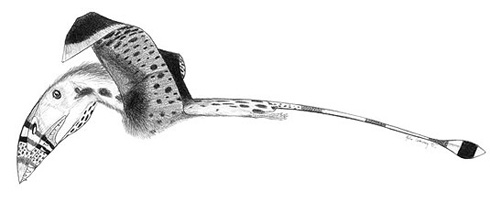
Detailed artists's depiction of Dimorphodon in flight
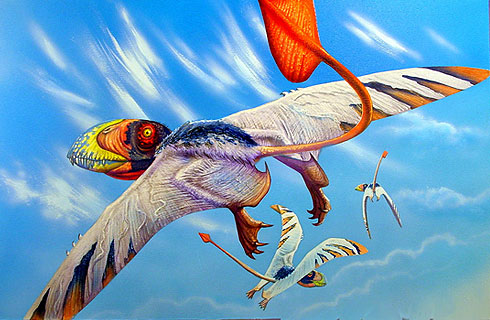
An artist's restoration of Dimorphodon
© Luis Rey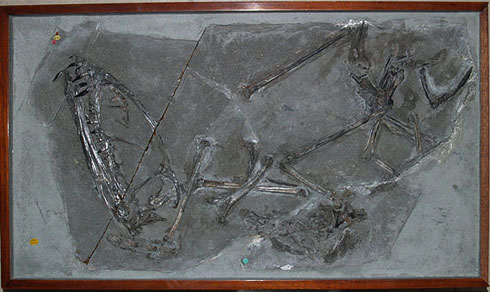
This almost-complete skeleton shows the large head and the long wing bones.
© Natural History Museum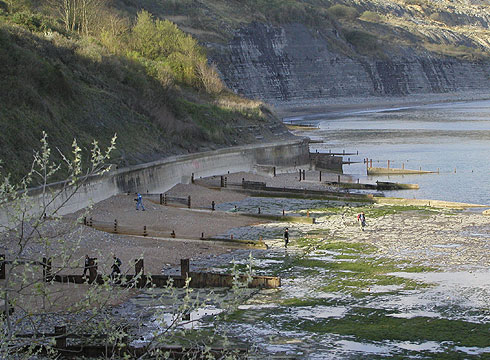
Church Cliffs at Lyme Regis, where Mary Anning collected fossils.
© Martin Munt, NHM Palaeo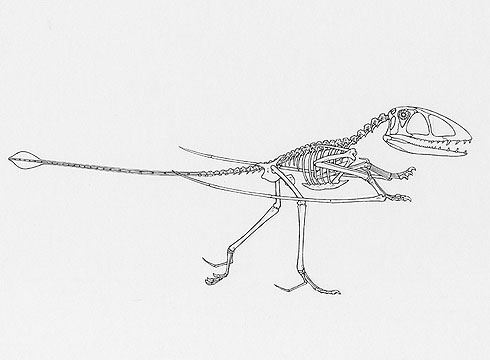
Drawing of Dimorphodon macronyx walking
© John Sibbick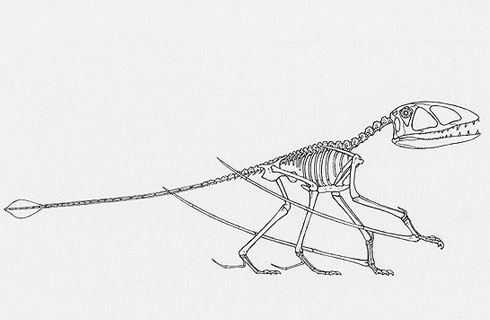
Drawing of Dimorphodon macronyx
© John Sibbick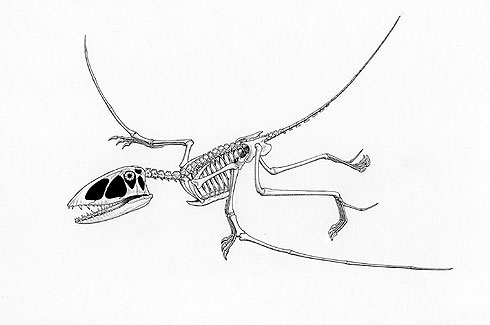
Drawing of Dimorphodon macronyx in flight
© John Sibbick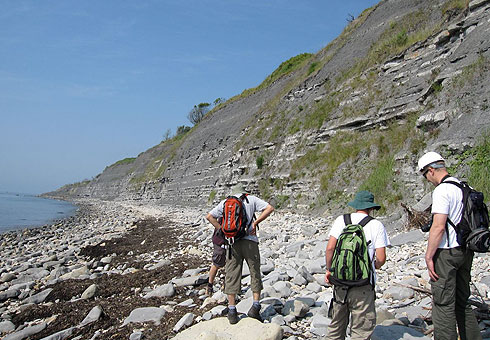
Early Jurassic cliffs, West of Lyme Regis, Dorset Coast
© Susanne Feist-Burkhardt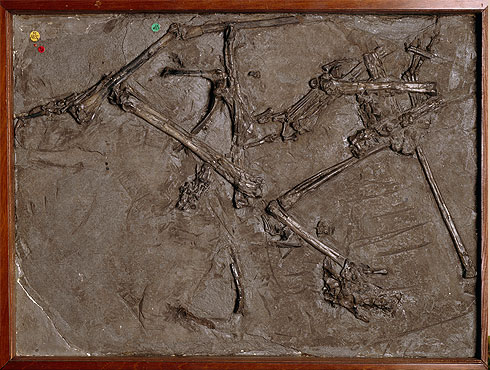
Fossilised skeleton of Dimorphodon macronyx, collected by Mary Anning in Dorset.
© Natural History Museum
